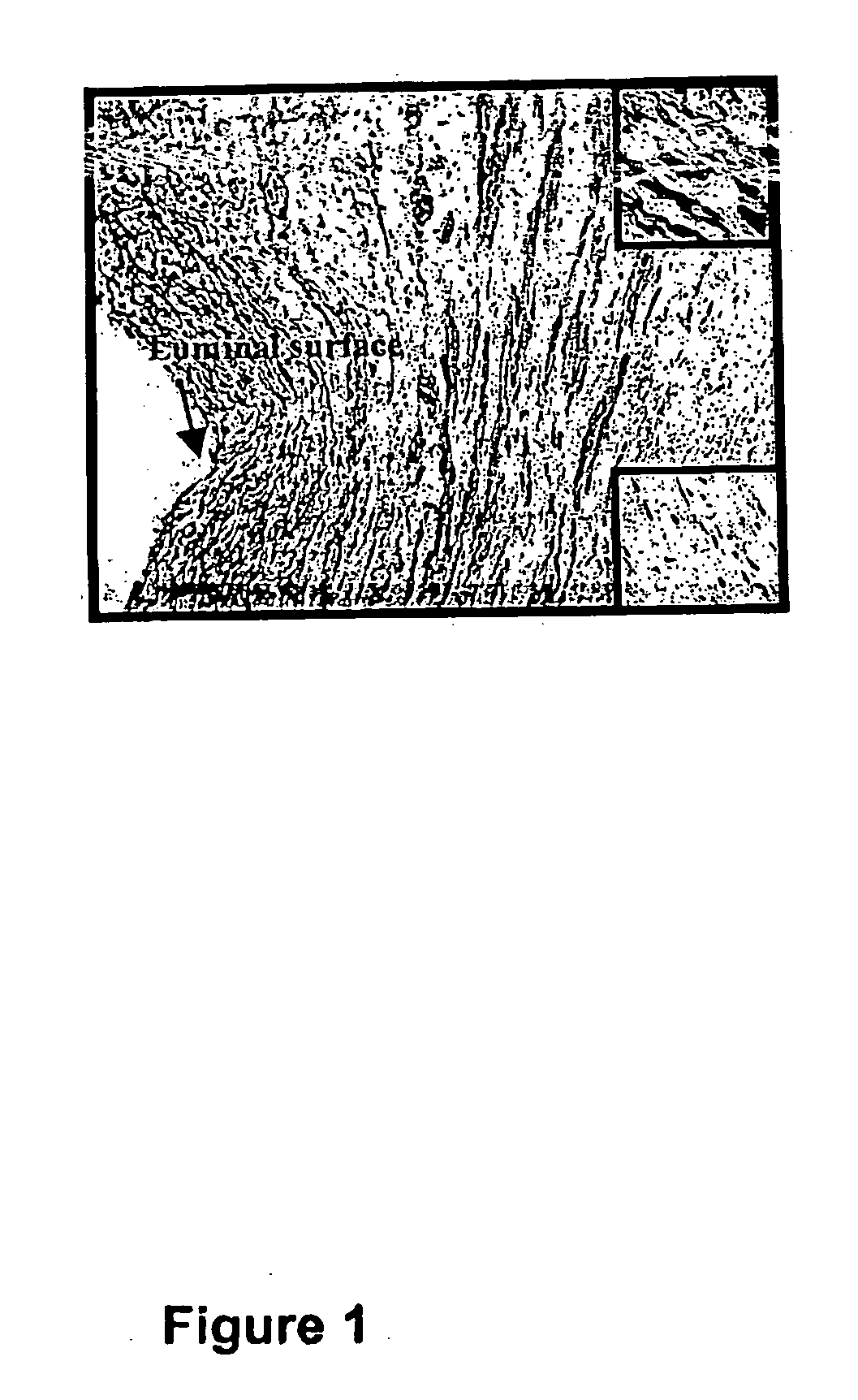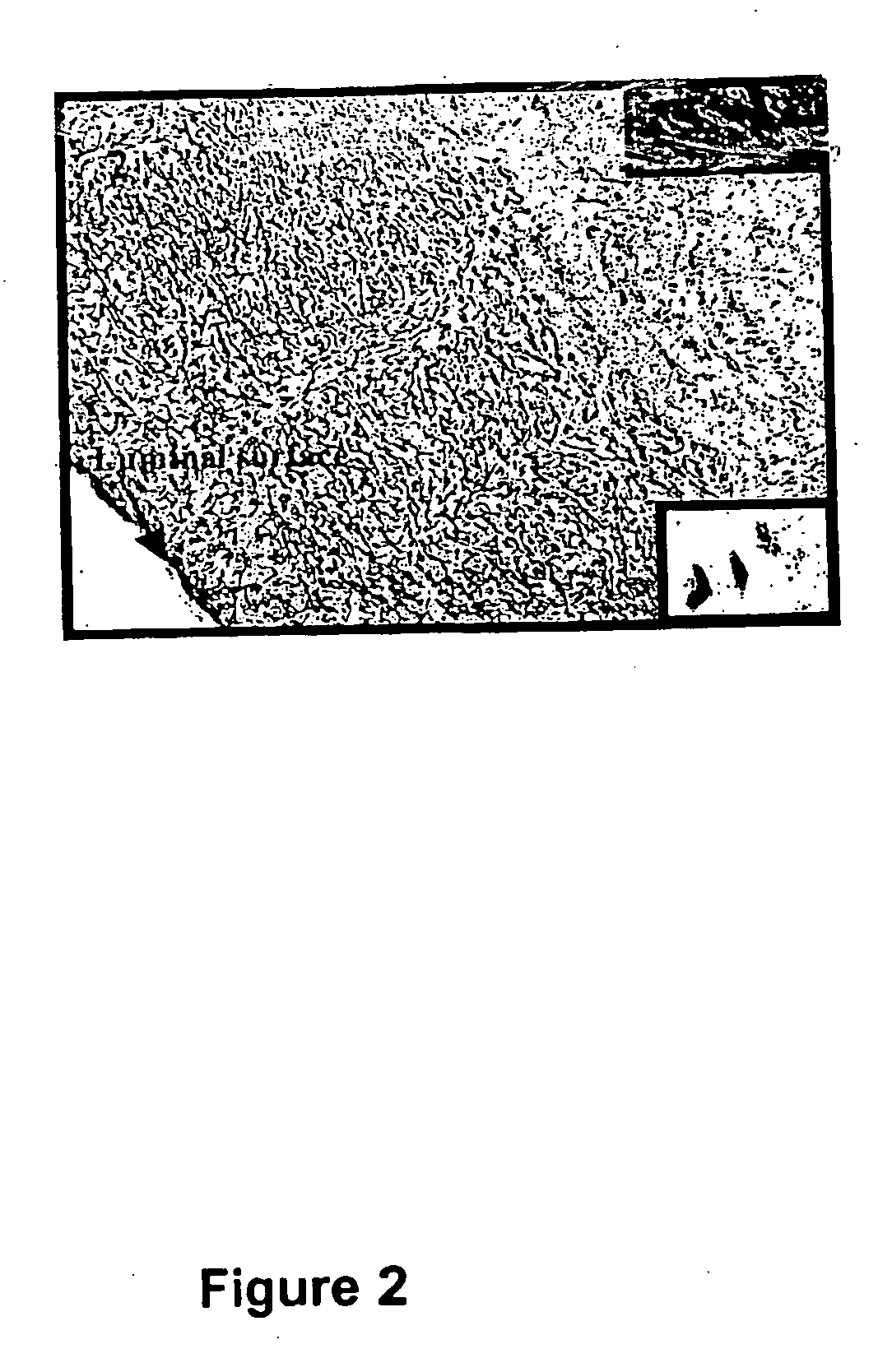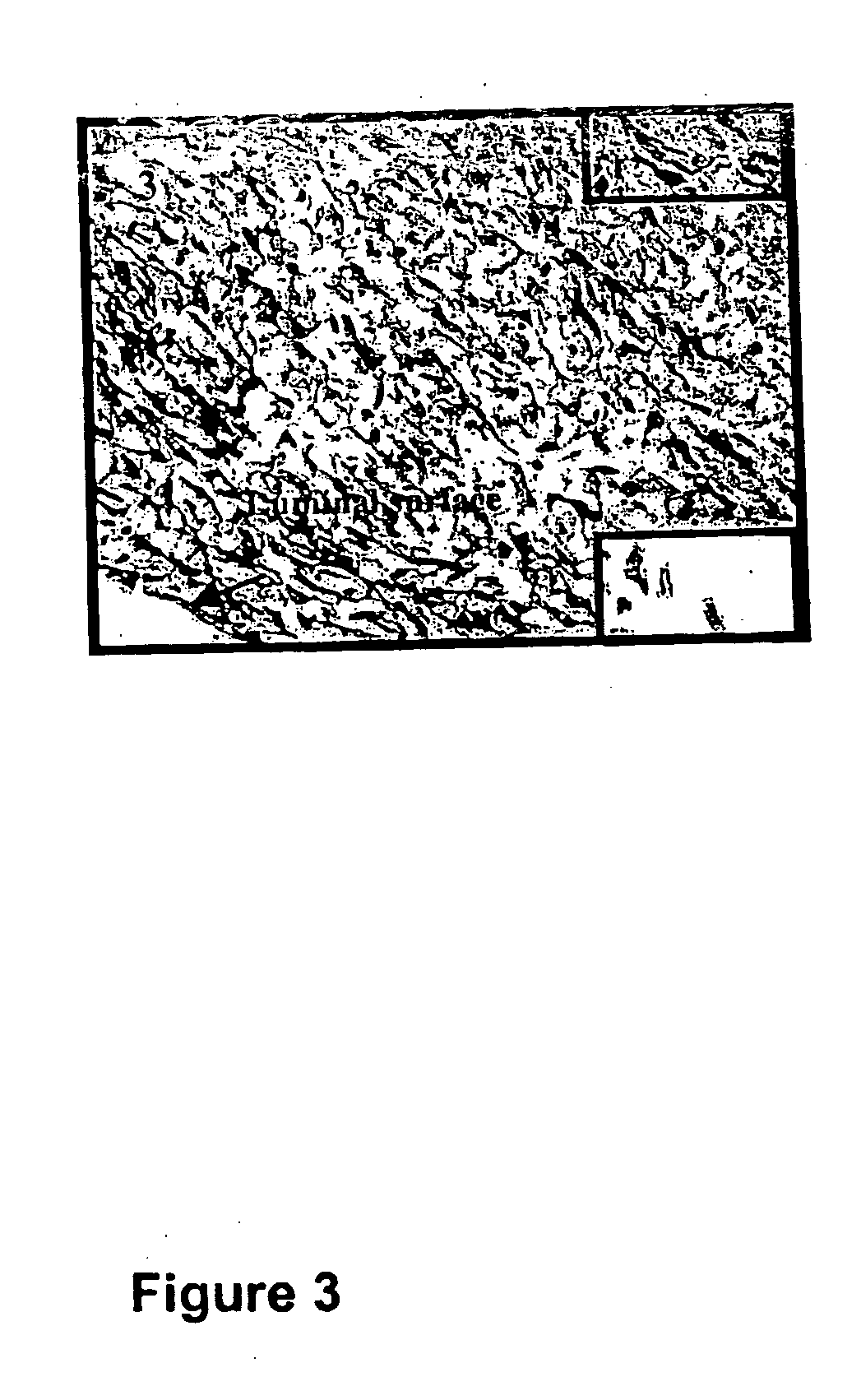Methods and compositions for the treatment of graft failure
a technology of graft failure and composition, applied in the field of methods and compositions for treating graft failure, can solve the problems of no effective therapeutic treatment known to prevent or treat, graft failure, thrombosis of ptfe graft, etc., and achieve the effects of reducing or inhibiting the natural immune response, preventing monocyte differentiation, and increasing the production or removal of monocytes
- Summary
- Abstract
- Description
- Claims
- Application Information
AI Technical Summary
Benefits of technology
Problems solved by technology
Method used
Image
Examples
Embodiment Construction
[0073] The invention generally features the inventor's discovery that platelet derived growth factor receptor (PDGFR) inhibitor compounds, such as N-phenyl-2-pyrimidine compounds (e.g., imatinib mesylate), inhibit the biological activity of the PDGFR, and are useful in treating AV graft failure.
Events Leading to Graft Failure
[0074] Graft failure resulting from neointimal hyperplasia is a major health problem for patients undergoing hemodialysis as well as those undergoing by-pass graft surgery as a treatment for advanced PVD. The stenotic lesion that leads to graft failure is typically characterized by these key events; migration of vascular smooth muscle cells into the intima; followed by proliferation of these vascular smooth muscle cells, and subsequent production of extracellular matrix.
[0075] This combination of migration, proliferation, and extracellular matrix production results in neointimal hyperplasia and stenosis. In addition, neo-vascularization occurs both in the in...
PUM
| Property | Measurement | Unit |
|---|---|---|
| Biological properties | aaaaa | aaaaa |
| Pharmaceutically acceptable | aaaaa | aaaaa |
Abstract
Description
Claims
Application Information
 Login to View More
Login to View More - R&D
- Intellectual Property
- Life Sciences
- Materials
- Tech Scout
- Unparalleled Data Quality
- Higher Quality Content
- 60% Fewer Hallucinations
Browse by: Latest US Patents, China's latest patents, Technical Efficacy Thesaurus, Application Domain, Technology Topic, Popular Technical Reports.
© 2025 PatSnap. All rights reserved.Legal|Privacy policy|Modern Slavery Act Transparency Statement|Sitemap|About US| Contact US: help@patsnap.com



